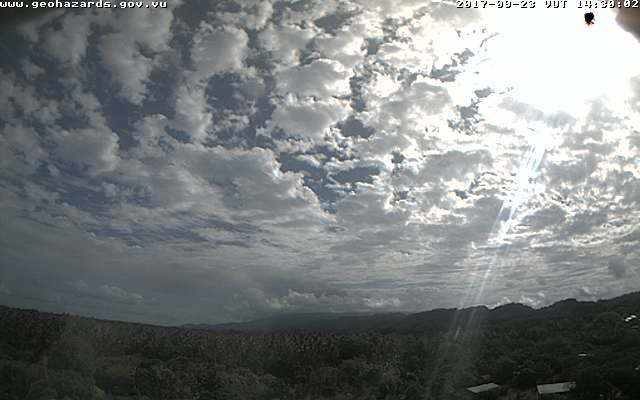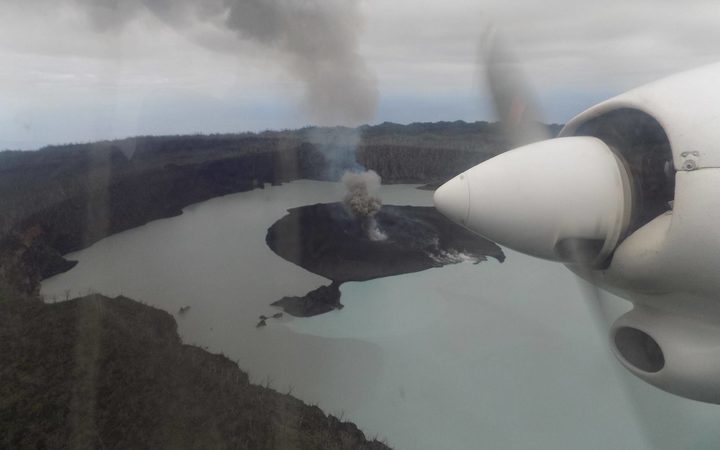
© Vanuatu Geohazards DepartmentA web camera picture of the Ambae Volcano in Vanuatu on Saturday morning.
Authorities in Vanuatu were preparing to evacuate as many as 5000 people on Saturday, as a volcanic eruption on Ambae island continued to intensify.
The country's Geohazards Department on Saturday raised its alert from level three to four, what it classified as a
"moderate eruption state."
The volcano is one of the most active in the world,
but its activity has steadily increased in the past couple of weeks, said Esline Garaeviti, the manager of the Geohazards Department. On Saturday, that increased further, with the volcano belching ash across much of the 400sqkm island.
"In the early hours, around 3-4am, we noticed that the activity started to increase, followed by another eruptive phase," said Ms Garaeviti. "So the ash plume from Ambae is still there now. The ash fall is expected all around the island."
"The increased level of activity means increased area of risk," she said. "There's more risk exposed to people on the island, that's why. It's a moderate state of activity."
Ms Garaeviti stressed that the state of the eruption was only moderate, but there was every chance it could increase. However, authorities on the island, which sits between Santo and Pentecost about halfway up the archipelago, were swinging into action on Saturday.
Shadrack Welegtabit, the director of the Vanuatu National Disaster Management Office, said his officials weren't taking chances,
and were preparing to start evacuating half of the island's 10,000 people from one side to the other.


Comment: See also: